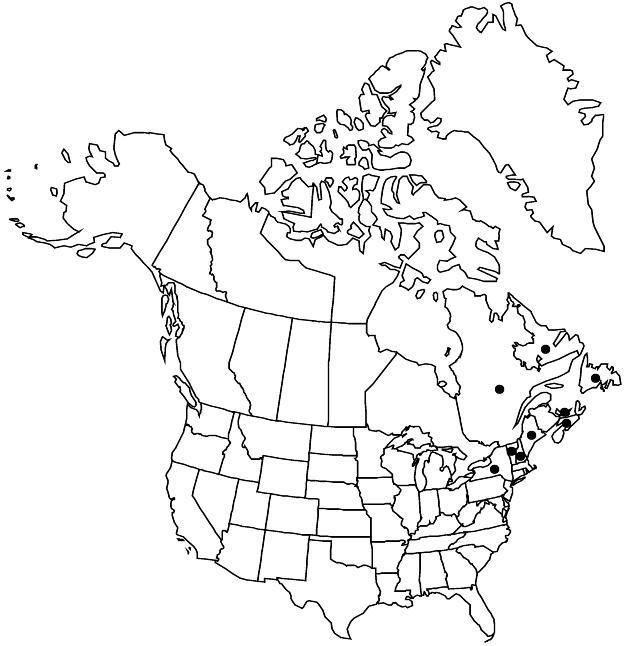Empetrum atropurpureum
Rhodora 15: 214. 1913,.
Branches green, brown, or reddish, distally white-tomentose, eglandular. Leaves ascending, becoming divergent; blade 4–7 mm. Flowers usually bisexual (plants synoecious), sometimes unisexual (plants polygamous); sepals greenish pink, becoming reddish purple. Drupes reddish purple or purple, opaque, 5–9 mm diam. Seeds light brown, 2–2.5 mm. 2n = 52.
Phenology: Flowering spring.
Habitat: Sand dunes, sandy terraces, exposed mountain slopes near treeline
Elevation: 0-1500 m
Distribution

Nfld. and Labr., N.S., P.E.I., Que., Maine, N.H., N.Y., Vt.
Discussion
Empetrum atropurpureum has been found with E. nigrum, which tends to replace E. atropurpureum at higher elevations (P. Zika, pers. comm.). Following J. H. Soper and E. G. Voss (1964), we do not extend the range of E. atropurpureum into the Great Lakes region as done by D. Löve (1960).
Notwithstanding the conclusions of D. Löve (1960), the name Empetrum purpureum Rafinesque has not been formally rejected; perhaps it should be. It has not been used by authors in almost 75 years, most likely because the name E. purpureum cannot be directly typified by a specimen, presumably from Labrador, connected to Rafinesque, thus we are not certain to which plants the name should apply. Interestingly, M. L. Fernald and K. M. Wiegand (1913) reasoned that the purple-fruited plant from Labrador did not belong with E. atropurpureum but with E. nigrum.
Selected References
None.